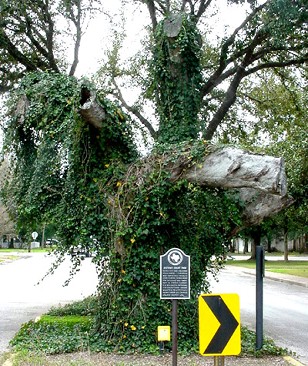The Columbus Court Oak, Columbus, Texas. (original) (raw)
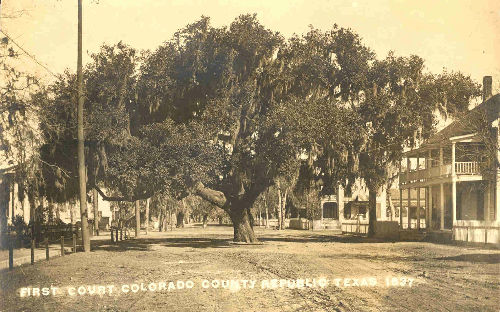
"First Court Colorado County Republic Texas 1837"
Columbus Court Oak Old Photo (No Date)
Courtesy Nesbitt Memorial Library
Trees have always featured in the history of Colorado County. The forest of stately, moss-draped Live Oaks with their massive branches frequently touching the ground captured the imaginations of the early settlers, many of whom had never seen an evergreen oak.
Back in the 1920s, the city of Columbus held a contest for an official city motto and the winning entry was "Live Oaks and Live Folks."
The Columbus Court Oak was one of two famous trees in Columbus. The second being the Columbus Oak - the second largest Live Oak in the state. Although the Columbus Court Oak has died in recent years; the trunk was left in place and today a marker and replacement tree mark the spot.
The Story ›
The Court Oak Lives ›
More Photos ›
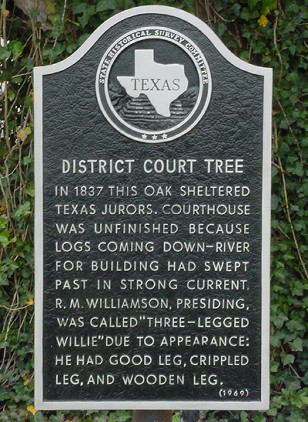
"District Court Tree"
Columbus Court Oak Historical Marker
TE Photo, 2001
Columbus Court Oak & Historical Marker
TE Photo, 2001
The Story:
In 1836, both Columbus and nearby San Felipe were burned rather than have them fall into the hands of the advancing Mexican Army. After Independence the settlers returned to rebuild. While waiting for a courthouse to be built, court was held under the shade of this tree.
The first term of the Colorado County District Court was held in April of 1837, with Judge Robert McAlpin Williamson, presiding. Judge Williamson, aka "Three-legged Willie" was a famous Texas jurist who had had his right leg permanently bent at the knee. A false leg extending from the knee to the floor - won him the nickname. Williamson won praise for both his judical acumen and his dancing ability. Williamson County was named in his honor.
While there may have been earlier cases heard under the tree, the earliest recorded case was held in May of 1837. It was noteworthy for the severity of the punishment ordered by the court. William Babbs, charged with grand larceny, "threw" himself upon the mercy of the court. The court wasn't feeling particularly merciful that day and Mr. Babbs received thirty-nine lashes - plus his right hand was branded with the letter T (for thief).
Babbs was also fined the cost of the lawsuit against him, but being unable to pay, he was then released by Judge Williamson.
The Court Oak Lives
Although the famous court oak is now officially dead, don�t believe everything you hear. The late Colorado County historian Bill Stein would tell interested parties that it was alive and well and living just a few blocks from the courthouse � and has been since it was an acorn.
According to Mr. Stein, it was well-known to Columbus residents which tree was the real McCoy, but when Highway 90 from Houston to Austin was paved, certain � adjustments� were made for the convenience of motorists. Moving the tree was out of the question, so the court oak was given a stand-in right alongside the courthouse. It wasn�t exactly a crime, but over time (and the erection of a historical marker), the stand-in became the star.
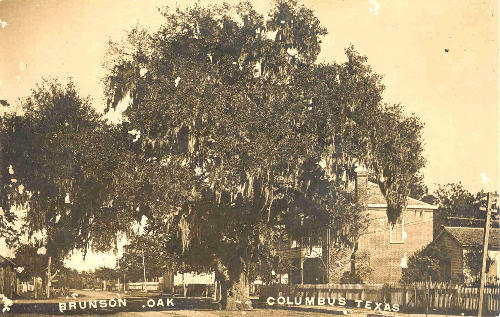
Historic Tree Columbus Court Oak Old Photo (No Date)
Courtesy Nesbitt Memorial Library
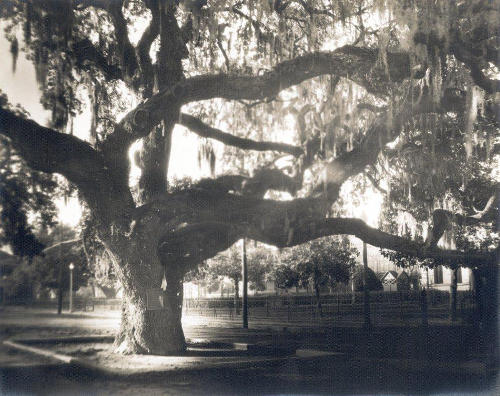
Columbus Court Oak Old Photo (No Date)
Courtesy Nesbitt Memorial Library
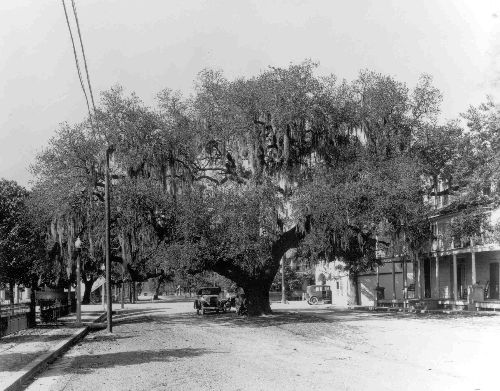
Columbus Court Oak Old Photo (No Date)
Courtesy Nesbitt Memorial Library

Columbus Court Oak in 1970
Photo courtesy Nesbitt Memorial Library
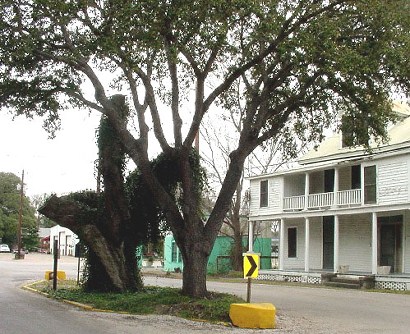
Replacement Tree - foreground
Columbus Court Oak - background
TE Photo, 2001

Columbus Court Oak Old Photo (No Date)
Courtesy Nesbitt Memorial Library
